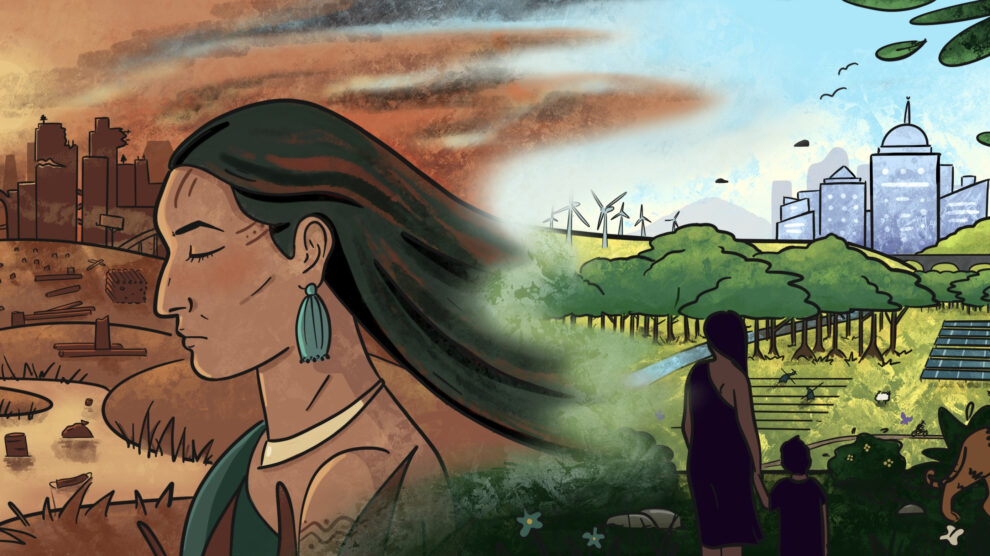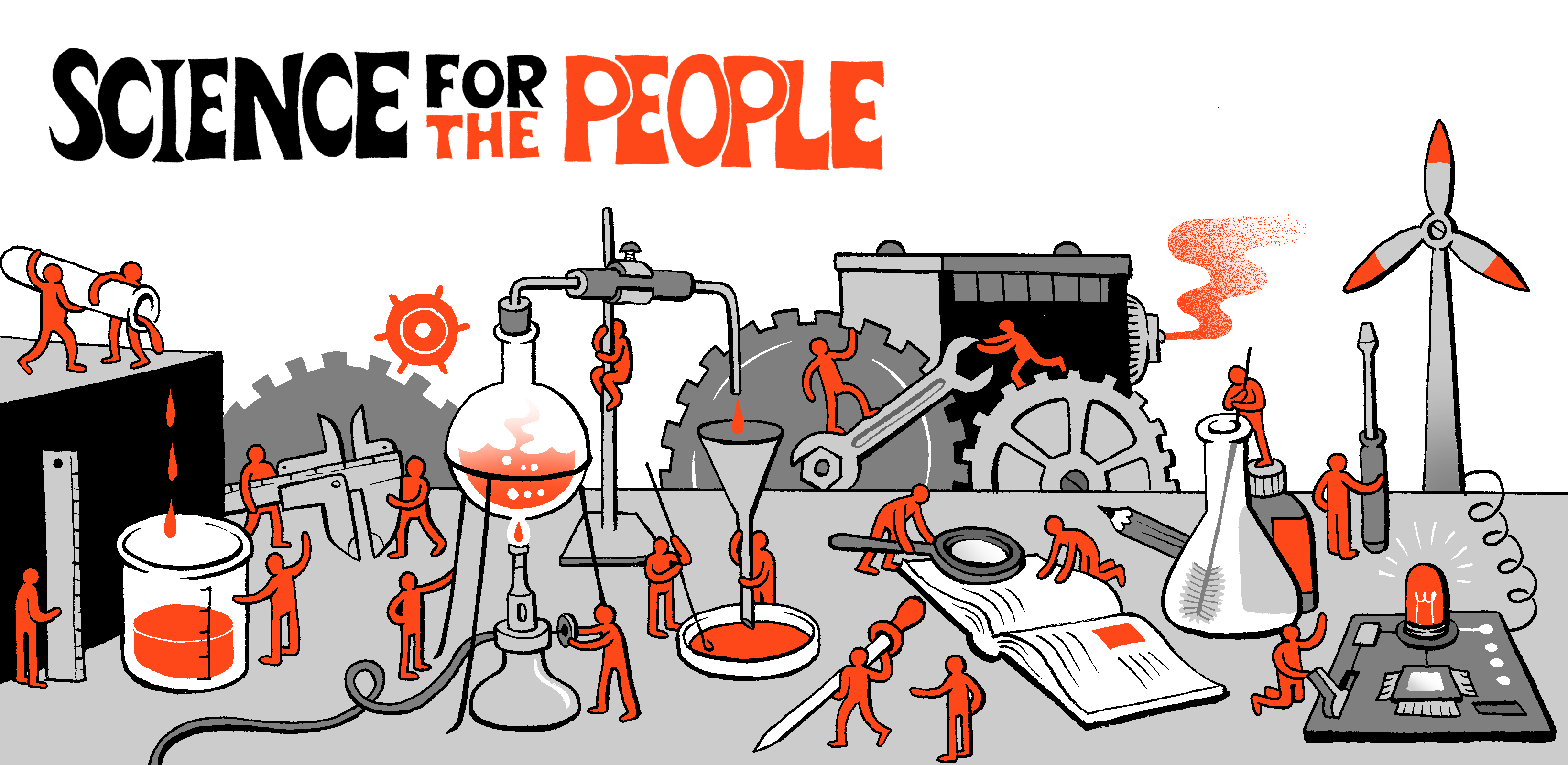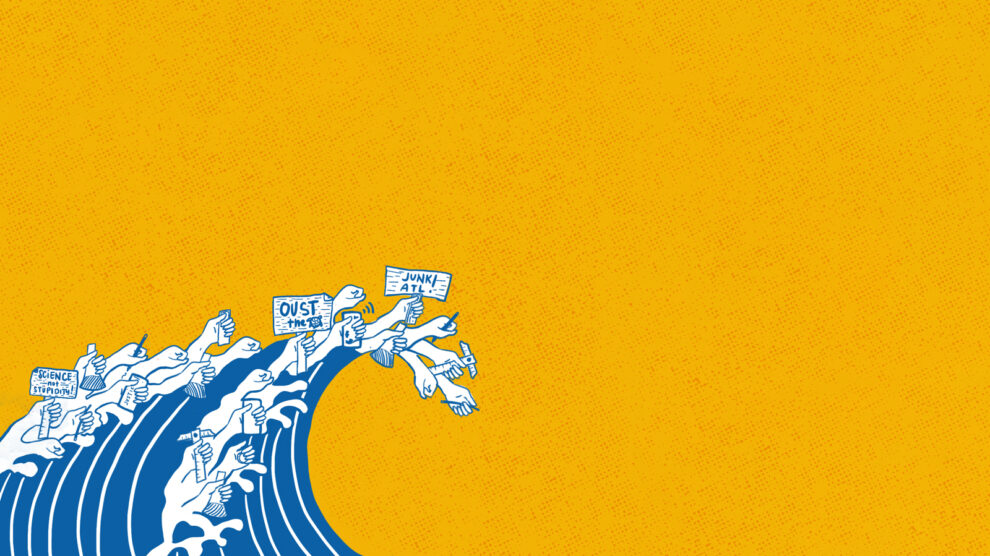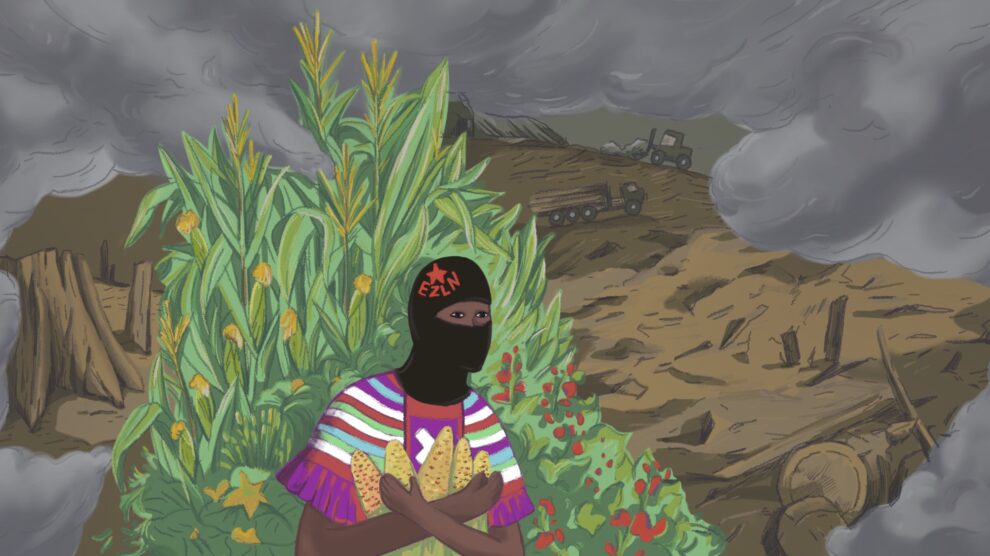From the Archives: Weather Manipulation and Militarism
By Erik Wallenberg
Science for the People is proud to republish three articles written by radical scientist activists in the 1970s on the topic of weather manipulation and militarism: “Weather Warfare” by Science for Vietnam — Chicago Collective, “Weather: Calamities of Nature & Weather Modification as a Weapon of Imperialism” by URPE & Mark Looney, and “Weather Modification and War” by Peter Caplan.
Below is an introduction to these pieces and the topic’s continued relevance today by Science for the People Acquisitions Editor and Geoengineering Editorial Collective member Erik Wallenberg.
Interested in seeing more articles like this? You can help support Science for the People‘s return to publishing in May 2019 by donating to our Kickstarter!
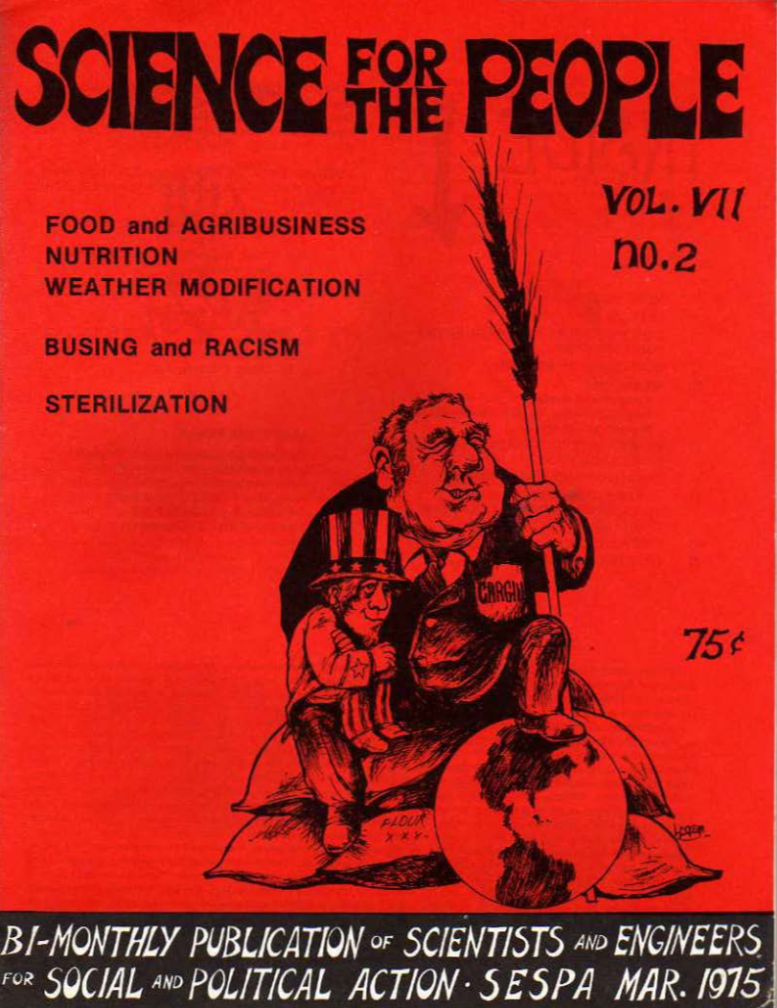
The first discussion in Science for the People of a program to manipulate the weather—a useful corollary as we consider the probability of attempts to engineer the climate—was in the July 1972 issue. In an article titled “Weather Warfare” we learn that the Chicago collective of Science for Vietnam, put together a report on the militarization of the weather. Drawing on the Pentagon Papers, the collective found that the US military began attempting to modify the weather in Laos as early as 1967 in what has now become an infamous operation that had many names over the years, but most commonly known as Operation Popeye. Operation Intermediary Compatriot attempted to flood the Ho Chi Minh Trail, washed out villages, and by 1972 the Pentagon was spending 10.5 million for weather modification programs.
By March 1975, in an article called “Weather: Calamities of Nature & Weather Modification as a Weapon of Imperialism,” Science for the People had uncovered reports that the earliest attempts at weather modification in Vietnam went all the way back to 1963 and was carried out by the CIA. The Chicago Collective of Science for Vietnam issued a report called “The Big Gun is the Rain” (if anyone has a copy, please contact us), which came to be the basis for another document never published by the magazine.
Drawing on the publications of Science for the People, among others, Peter Caplan, a member of SftP, presented a paper, “Weather Modification and War,” on this topic to a group of scientists in 1973. He started with concern over the US military’s use of “environmental warfare” or “ecocide” as they sprayed herbicides, dropped bombs, and blew up dykes, destroying the landscape and littering it with toxins. But Caplan was concerned with the military’s move beyond these more traditional forms of warfare into new techniques of “geophysical warfare” including the purposeful creation of earthquakes, changing the weather, and manipulation of tides and currents.
Caplan’s paper shows the military origins of research and funding for weather modification and the then current move for academic cover and personnel to continue the research. And while he raises the technical difficulties and uncertainties of the project, his focus on the social and political questions of who would make decisions about the weather are central. Of course the military and big business, agribusiness in particular, would be the likely beneficiaries while small farmers and poor people and countries could expect to suffer.
Caplan quotes a Pentagon’s statement justifying its weather modification research by arguing that other states in the world might develop “the ability to create modification of climate that might be seriously detrimental to the security of this country.” Reading this today, in a world gripped by the early stages of climate chaos, the irony of this statement is too great. The US has gone on to be the biggest contributor of greenhouse gas emissions creating climate chaos around the world, and the Pentagon issues reports about the security threats they see as likely coming in the near future.
In his concluding section, “Technological Solutions to Social Problems,” Caplan argues, “The practice of applying technological solutions to social problems has become a serious disease of Western society.” Today, we can see that disease has only gotten worse. Climate change is a social problem of fossil fuel companies controlling such a large portion of the world’s economy as to be able to force humanity to get its power from these sources instead of building better alternatives.
Instead of trying to modify the weather, Caplan paints a picture of how a rational society might act to help those in the path of a hurricane. Given the recent devastation wrought by hurricanes Maria, Harvey, and Michael, we might heed his call to stop fighting nature and instead focus on providing better infrastructure, warning systems, aid in evacuation, and compensation for loss. “If we organize ourselves rationally,” he writes, “we needn’t always attack nature in order to survive comfortably.” This rationality includes a call for a moratorium on weather modification. These are demands we need to make central to our movement for climate justice today.
Read more:
“Weather Warfare” by Science for Vietnam — Chicago Collective
“Weather: Calamities of Nature & Weather Modification as a Weapon of Imperialism” by URPE & Mark Looney
“Weather Modification and War” by Peter Caplan


